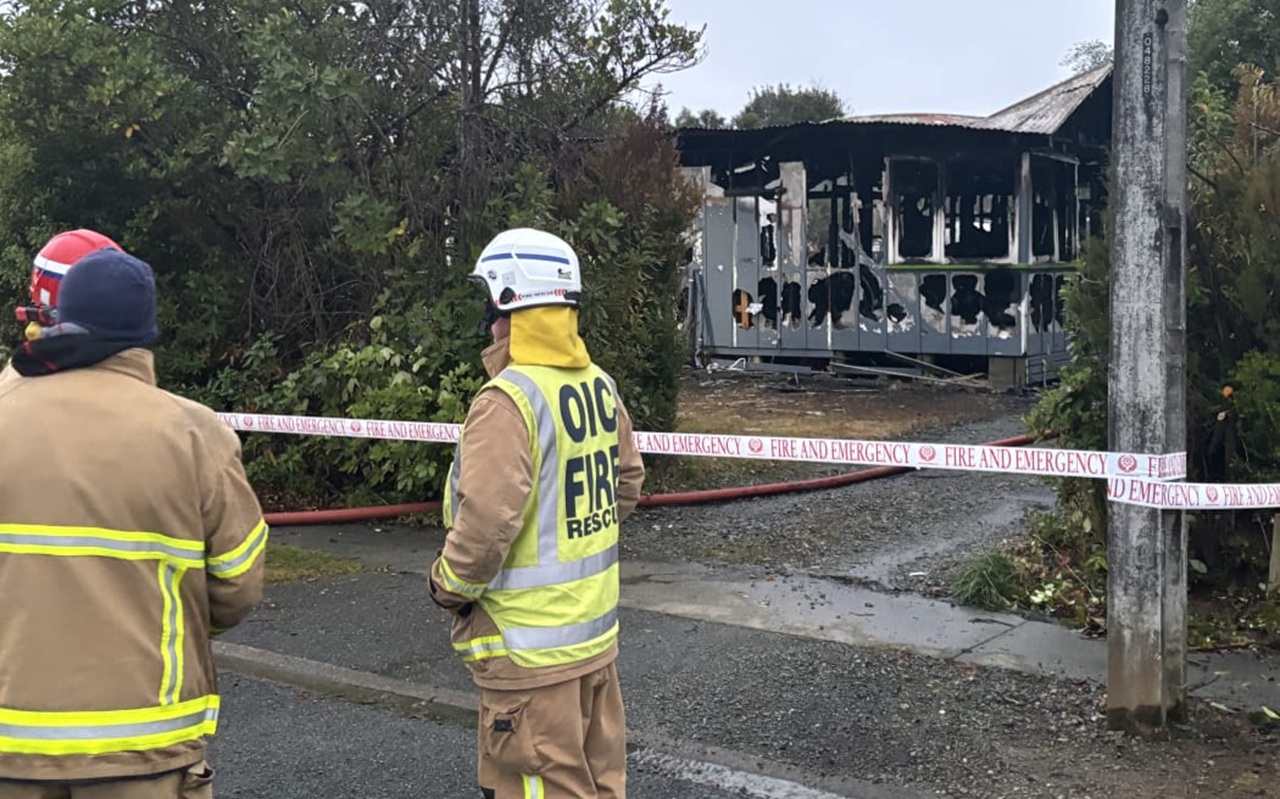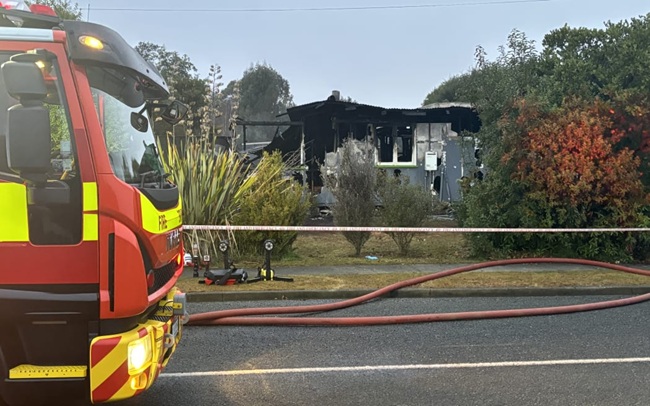Mother and son killed as heater sets bed alight
Reporting by RNZ
13 October 2025, 8:09 PM
 The scene of the fire on the morning of July 4, 2024. Photo: Southland App
The scene of the fire on the morning of July 4, 2024. Photo: Southland AppA house fire that killed a Southland woman and her 11-year-old son was potentially caused by a heater setting alight bedding, a Coroner says.
Kellyanne Kemble, 47, and Kelly Kerr, 11, died when fire ripped through their Manapouri home early on July 4 last year.
Fire investigators found the fire on View St, was caused by an industrial heater in the boy's bedroom.
There were no working smoke alarms in the house.
Coroner Heather McKenzie, in findings released on Tuesday, said the temperature was very cold at the time, dropping to -0.1 degrees Celsius overnight.
"[The house] was known to be cold and heaters and a wood burner were often used. The door to the wood burner in the lounge was often left open to extend the heat.
"There was an internal storeroom used as a garage which contained flammable fuels, tools, portable gas cylinders, paint, and other combustible materials."
The Coroner concluded the mother and son died of smoke inhalation.
Kemble also had an underlying heart disease which would have accelerated her death, the Coroner said.
Jason Hoggard, Kemble's partner, also lived at the house but was away working on a charter boat at the time.
The couple usually slept in the lounge where they had their double bed.
One of the two bedrooms was used to store furniture and clothing, and Kelly slept in the other bedroom.
Neighbours heard explosions and yelling and saw flames coming from the home about 3.35am that morning, McKenzie said.

The single-storey house was badly damaged by the fire. Photo: Southland App
The Manapouri and Te Anau volunteer fire brigades extinguished the fire, but the home was extensively damaged.
"Kellyanne was found in the lounge and Kelly was found in his bedroom under the bed.
It cannot be known whether Kelly was sleeping under the bed (he sometimes slept on the floor) or if he was trying to escape to escape the fire and thought this to be a safe place."
A Fire and Emergency investigation found four possible causes for the fire.
It was possible the heater's cable or plug overheated; there was a fault with the heater; the heater igniting bedding; or combustible materials draped or falling on the heater igniting.
Radiant heat played a major role in the spread of most fires.
"There was no evidence of LGP gas, connections, or cyclinders being involved in the fire.
There were also no signs that the fire started near the wood burner or anywhere else in the lounge (in a context where it was common for the wood burner door to be left open)," McKenzie said.
"The fire's spreading was helped by a north-northeast wind and ventilation factors."
There was only one way out of the house as other exits were blocked, the Coroner said.
She did not make any recommendations but emphasised Fire and Emergency's fire safety messaging.
Fire and Emergency's website provided information about fire alarms and the safe use of heaters, including not having combustible materials close to them, the Coroner said.
McKenzie was satisfied there were no suspicious circumstances.
Published by Permission